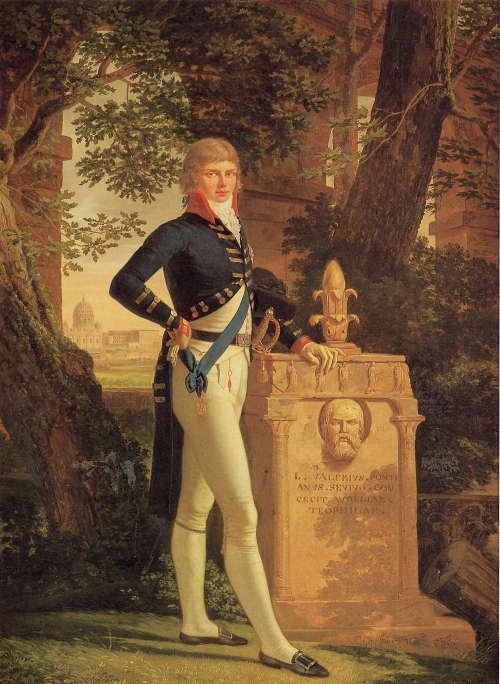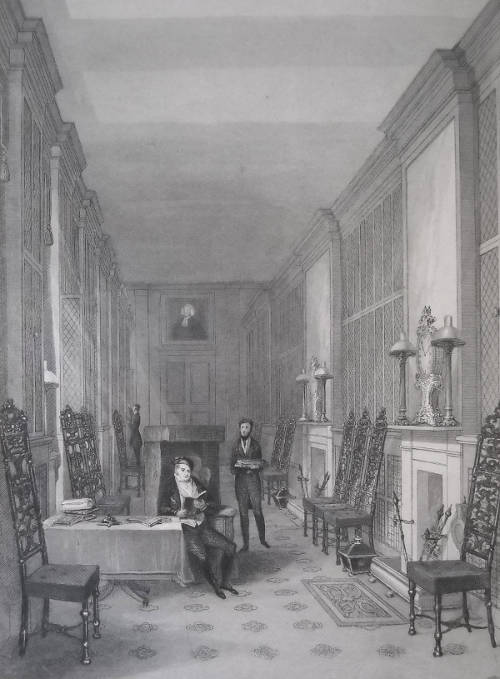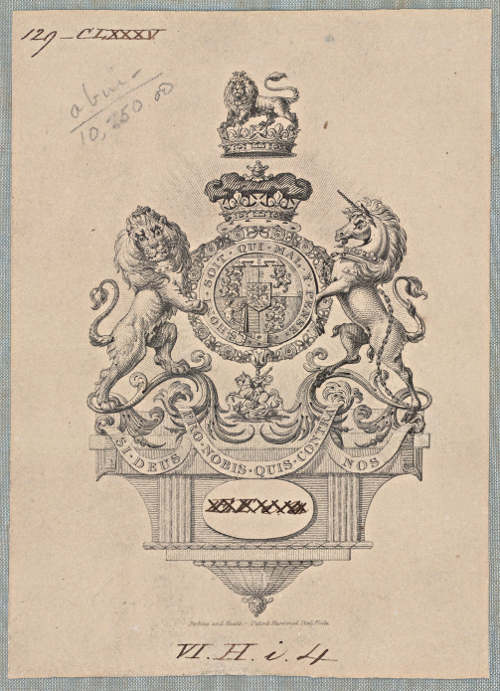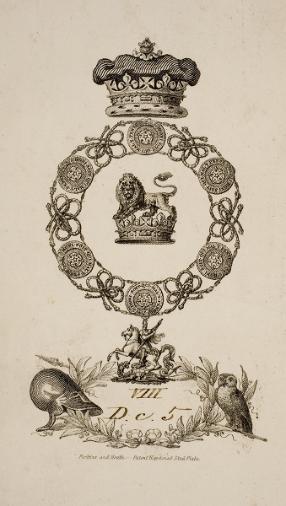King George III of England (1738–1820) had fifteen children by his wife Charlotte Sophia of Mecklenberg-Strenitz (1744–1818). The eldest child was a boy who became King George IV (1762–1830), while the ninth child, the 6th son, was Augustus Frederick (1773–1843), who was given the title Duke of Sussex.1

Accounts of the Duke's library emphasise that it was built-up volume-by-volume rather than by en bloc purchases of entire libraries.2 This process was largely undertaken from 1819 to 1830 by Thomas Joseph Pettigrew, who was both the Duke's Surgeon and his Librarian, and who published a catalogue of the theological manuscripts.3 In the preface to the catalogue, he states that "The Library already consists of upward of fifty thousand volumes of Mss and printed books. Twelve thousand of these are Theological." Of these 12,000, about three hundred were manuscripts: 148 Latin; 51 Hebrew; 34 French; 14 English; 12 Greek; 9 Italian; 8 Dutch; 6 Burmese; 4 Arabic; 3 Pali; 3 Singhalese; 2 Spanish; and 1 each in Irish, German (an Apocalypse with commentary), Persian, and Armenian.
An account of the library in Kensington Palace illustrated with a plate was published shortly after the Duke's death in 1843.4 After disparaging the building as a whole – the writer thought that its "'ill-proportioned and incongruous divisions' was of 'repulsive character"! – the library receives praise:
"To no one is the fame of the palace under such obligations as its last resident, the lamented Duke of Sussex. Under his enlightened care, it became celebrated as the depository for the finest theological library in the world; with a renown no less extensive for the splendid hospitality shown to its learned visitors. This library occupies a corridor which formerly connected the ancient with the more modern portion of the building, – a place very inconvenient in its general proportions, but which was at length made by various accommodations and accessible, and even elegant apartment. A glance at our engraving will show, better than description, its size, fittings an the style of its furniture. In length it is about a hundred feet. The editions of the Holy Bible and the New Testament occupy one entire side, and the smaller works and MSS. are arranged in cases and presses beneath. Portraits of the Rev. S. Parr,5 D.D., and the Rev. Abraham Rees,6 D.D. – old bibliographical friends of the Duke – painted by Lonsdale,7 are placed over the doors at each end of the gallery, into which the light is admitted through stained glass, from windows looking into the courtyard of the palace. Here, surrounded by 45,000 volumes of books, it was the custom of the Duke to spend his solitary and social leisure ..."

The unusual chair in which the Duke sits in this image is explained by the writer:
"he was fully mindful of the adage, that 'much study is a weariness of the flesh,' and being also very subject to cold, he contrived for himself a huge library chair, curtained round and covered from the air, in which he might read and think at ease."
Several visitors recorded visits to the Duke's library. The Revd Thomas Frognall Dibdin, for example, explained that there was the library proper, where the biblical, patristic, and other theological books were kept, described above, and adjacent to this was added a large square room in which the Duke received guests on his "public evenings", in his capacity as President of the Royal Society.8 It was for the latter room that the Duke ordered handsome book-cases made of Spanish mahogany, at a cost of over £220.9 According to the Dictionary of National Biography,
"He was elected president of the Society of Arts in 1816, and from 1830 to 1838 was President of the Royal Society. In the latter capacity he gave brilliant receptions in his apartments at Kensington Palace, but the resulting expense induced him to resign the presidentship, as he preferred spending the money on his library."
The Duke's book-plate occurs in two forms. Neither includes his name. The larger consists of his coat of arms, flanked by lion and unicorn supporters, surrounded by the Garter ribbon and collar, St George below, surmounted by a ducal coronet, his crest, and with his motto "si . deus / pro . nobis . quis . contra / nos" (If God is for us, who is against us?), resting on a pediment, below which in tiny lettering is the printer's mark "Perkins and Heath – Patent Hardened Steel Plate".10

The top left-hand corner of the book-plate is inscribed in brown ink '129 - CLXXXV', referring to the fact that this is described as no. 129 on page clxxv of the library catalogue. A blank cartouche in the plinth depicted on the book-plate is inscribed with an obsolete shelf-mark which is now hard to read because it has been crossed-through in ink. A later shelf-mark is inscribed at the base of the book-plate: 'VI.H.i.4'.
The smaller version is much simpler, and consists of his crest within the garter, surmounted by the ducal coronet:

The Duke lived beyond his means and amassed substantial debts; after his
death his possessions, including the library, was sold by Evans: Bibliotheca
Sussexiana: The Extensive and valuable Library of His Royal Highness the Late
Duke of Sussex, K.G. ... Which Will be Sold by Auction by Messrs. Evans ...
Monday, July 1st and Twenty-Three Following Days (Sundays Excepted) 1844.
The above account is derived from Peter Kidd, 'Provenance of the Manuscript', in Apocalypse (Yates Thompson MS. 10) [facsimile commentary] (Madrid, 2010)
Further bibliography:
Last updated 27 May 2012